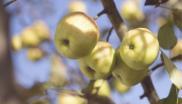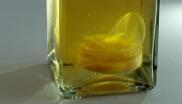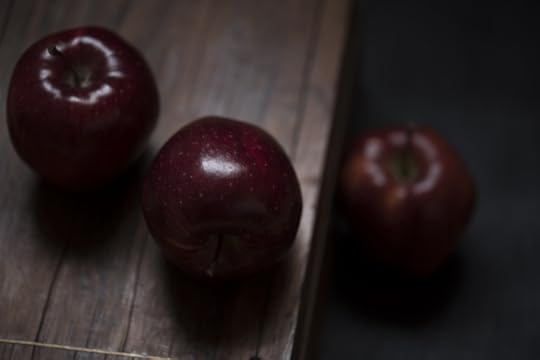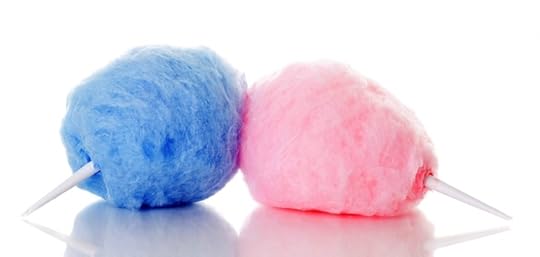Catherine Lind's Blog, page 4
October 10, 2016
Apples, apples and I can’t eat them

Catherine
Mon, 10/10/2016 - 16:42
We have a small orchard, which is very beautiful in the spring and great fun during the summer. At least if you can eat apples. I can’t because I am allergic. If I eat a raw apple, my throat starts to swallow and I can’t breath after a while.
Apples, apples and I can’t eat them

We have a small orchard, which is very beautiful in the spring and great fun during the summer. At least if you can eat apples. I can’t because I am allergic. If I eat a raw apple, my throat starts to swallow and I can’t breath after a while.
I can eat apple pies, jam and other types of cooked apples. I just can’t eat them raw. I have a food allergy and fruits are one of the most difficult ones. Take grapes for example; depending on the type of grape and its skin, I can sometimes eat them. Same thing with tomatoes and bananas, I can eat some of them, but most of the affects my breathing. Over the years my husband have learned an interesting skill; he can distinguish which grapes I can and can not eat. A few times, when he is unsure: it usually means that I can’t eat them.
Yes I do try to eat stuff, even though I know it might not work. And yes, the allergy medication is close by just in case. Any way, back to apples.
We were picking apples in the garden when my husband suddenly says:
“You know what, I actually think you can eat this. Do you want to try” He removed a piece from the apple he was eating and gave it to me, making sure it was no skin on it since that can make things worse. I ate the tiny little piece of apple and didn’t feel a thing.
“Give me another one” I said. One more apple piece, still nothing. Two more, nothing.
“Give me the apple” I said and dug my teeth into it. I can’t remember the last time I ate an apple. The feeling when I stood there in the orchard chewing on that beautiful little apple; well I owned the world.
I don’t know what’s so special with that one little apple tree. I don’t know the variety and no one I’ve asked recognizes it. The tree was planted around 1890 and for some strange reason; I can eat the apples.
At least one of the trees in our orchard produces an apple that I’m not allergic to. Small things like that makes me feel that this house was meant for us.
Rate this article:
Select ratingGive Apples, apples and I can’t eat them 1/5Give Apples, apples and I can’t eat them 2/5Give Apples, apples and I can’t eat them 3/5Give Apples, apples and I can’t eat them 4/5Give Apples, apples and I can’t eat them 5/5
No votes yet
Tags: ApplesThoughts
October 9, 2016
How to make your own vinegar
Channel
How to
Catherine
Sun, 10/09/2016 - 23:17
Teaser Media
[image error]
How to make your own vinegar

Catherine
Sun, 10/09/2016 - 17:28
I have a Mother of Vinegar! I’ve had it for over ten years now and it continuous to produce vinegar. I must admit though that it started out as a mistake. A Mother of vinegar is a bacterial entity developed from fermenting cellulose. It turns alcohol and oxygen into acetic acid, i.e. it produces vinegar.
How to make your own vinegar

I have a Mother of Vinegar! I’ve had it for over ten years no and it continuous to produce vinegar. I must admit though that it started out as a mistake.
A Mother of vinegar is a bacterial entity developed from fermenting cellulose. It turns alcohol and oxygen into acetic acid, i.e. it produces vinegar.
We make our own apple juice and during the first year in our orchard, I hadn’t learned the difference between different apples. Anyway a huge batch of apples where crushed and then pressed in our apple press. They where nice, sugary apples; though not juice-apples. The liquid was turbid and not really appetizing. I transferred it to a five gallon can and set it aside. The idea was to try to filter it, or find another way to clear it up.
I forgot about the can, so it stood there for about a week. Unfortunately it started to ferment. The initial thought was to throw it out, then I said to myself; okay, let’s see what happens. So I wrapped some cling foil around the top, since my can didn’t have a lid. Then put it in the cellar… and forgot about it.
Fast forward two years, that’s about the time I discovered a dusty can in the basement with some plastic wrap around it. One grumpy husband later and the can entered the kitchen. Two years, some really sweet apples and a loosely wrapped cling foil had created the most beautiful apple vinegar and an equally beautiful Mother of Vinegar.
The can produces 1-2 gallons of vinegar per year. Now and then I give it some TLC and add some apple juice to it, but most of the time the can just sits there in the basement.
Our apple vinegar is great as it is, but I make spiced vinegar by adding chili, juniper, rosemary and other spice mixes.
I’ve also made a balsamic type of vinegar by adding 1 cup of sugar to 12 cups of vinegar and then let it reduce on low heat until approx. 3 cups liquid remains.
If you want to create your own Mother of Vinegar there are a few important things:
You need fresh fruit juice, you can’t use anything with preservatives in it, since it stops the fermentation process
There must be “real” sugar in the juice, no stevia, aspartame and other artificial sweetener. I suggest you add extra sugar so you are on the safe side
The vinegar needs oxygen so don’t cover it completely
Store it in a dark place
Give it time, at least a year
Your Mother of Vinegar looks like a large lump at the bottom of the can, don’t ever let it dry. Don’t add water to it, just fresh fruit juice and some extra sugar now and then.
I have only made vinegar on apple juice, so I can’t recommend other types of juice. I don’t know what will happen to the vinegar with other types of juice. If I should guess; I’ll say that grapes and berries are better than citrus juices, but as long as you have a lot of sugar in it; you are good to go.
So good luck, producing your own vinegar.
Image from Wikimedia. My Mother of Vinegar isn't as nice looking, it's more like a sponge.
Rate this article:
Select ratingGive How to make your own vinegar 1/5Give How to make your own vinegar 2/5Give How to make your own vinegar 3/5Give How to make your own vinegar 4/5Give How to make your own vinegar 5/5
No votes yet
Tags: How toFood
September 27, 2016
Apples, part 3

Let's wrap up the apple postings. We have two types of apples left. Juice- and wax apples.
Lets start with the Juice-apples. In our orchard we have both red and green juice apples. When you microwave them they behave similar to compote-apples, though you feel the difference when you eat them. They are so moist so they drip when you cut into them. In our orchard the juice-apples mature late September, early October. Even when they are ripe they stay on the tree, much longer than other apples.
If you cook them they behave similar to compote-apples, though they become apples pieces in sauce. Very delicious, but not at all fun if you expect apple jam. What makes these apples so special are their ability to make a clear, golden, sweet, beautiful apple juice, in large quantities. You can use a normal juicer, just cut them into pieces.
We mince them in a large grinder, than press them in something that looks like a small wine press. 75-80 % of it’s weight becomes juice, I quickly heat up the juice to get rid of all bacteria and bottles it. The juice last at least a year with no problem.
Let me revise that, the juice don't last that long, it has a tendency to quickly disappear; almost vaporize. If, by a small miracle, a bottle will survive a year, the juice is still as fresh as the day I bottled it.
I never add sugar to these apples and the juice is completely clear with no residues at the bottom of the bottle.
The first year in the orchard I made the big mistake of juicing the puree-apples. That was interesting. For me apple juice should be a clear liquid, but what I had in that bottle where far from clear. Eventually all the apple residue settled down and almost half the bottle became drinkable. Not one of my best moments. So never juice puree-apples.
If you add gelatin to the apple juice you get a great, natural flavored jelly.
You can also make vinegar on the apple juice, let me come back to that in another post.
The last apple type are the winter apples or Wax-apples as we call them; because of their waxy skin.
These apples mature late October, sometimes even in November. They are probably one of the most versatile apples we have in the orchard. You can’t pure them, but they work great both in jam, pies and other foods.
Wax-apples have a thick skin, coated with a layer of wax. As long as the skin is intact, no scratches, marks or blemishes; the apple can be preserved for up to six month.
When I pick these apples, I sort them into two qualities. The ones that are perfect goes into the basement and we eat them all through out the winter. The other group becomes jam and I also cut them into wedges and freeze them fresh. Wax apples are actually freezable, just let them thaw slowly in the fridge.
There are different ways to store wax-apples, but this is how I do it.
First I polish them with a soft cloth, so they are shiny. This way it’s much easier to see if the wax coat is intact, it’s the wax that preserves the apple and even if it’s slightly damaged; it will spoil the apple. Unfortunately one spoiled apple can spoil the entire batch.
After I polished them, I wrap each apple in paper. Newspaper works fine, you just have to rinse them before you eat them. Then I stack all apples in wooden crates and store them in our basement pantry, where it’s cold and dark. My grandma used to add sand to the box, but I don’t think it makes such a big difference. It’s much more messy though.
We usually start eating the apples at Christmas and continues through out April. Now and then I go through the boxes, removing apples that looks bad. If one spoils; it takes less than a week to spread through out the box.
Rate this article:
Select ratingGive Apples, part 3 1/5Give Apples, part 3 2/5Give Apples, part 3 3/5Give Apples, part 3 4/5Give Apples, part 3 5/5
No votes yet
Tags: ApplesFood
September 21, 2016
Apples, part 2

Let's continue to talk about apples. In our garden these apples are the next batch to mature and I simply call them Apple-pie apples, since that's what they do best. You can probably find them in different colors; but our varieties are yellow-red and slightly larger than our other apples, more oval than round in their shape.
These apples are perfect in food and baked dishes. They always retain their shape, meaning that even when they are soft; your apple pie has nice wedges. If you microwave a wedge it will hold its shape, regardless for how long you cook it. I don't know any other apples that does that, so they are easy to recognize.
If you puree these apples you get a grainy puree that feels like eating sand. These apples are very dry and the meat is firm, you can even chop and fry them without any problems.
I use these apples for pies, in casseroles and I also dry them.
The easiest way to dry apples, if you don’t have a hydrator, is to remove the center, slice them thinly and hang them on a string. It’s difficult to dry apples in the oven, since they becomes more baked than dried. Store them in an airtight container and they will last all winter.
If you want a quick treat or something nice on a Sunday morning. Chop some apples in quarter inch pieces. Fry them with butter, add some sugar and cinnamon. While still hot spread them over toast and enjoy to a nice cup of coffee. Works as well on a Friday evening over ice-cream.
That brings us to another apple, the next batch that matures in our garden. My grandma used to call them Compote-apples or jam-apples.
These are the most beautiful of our apples, with strong colors and a classic apple shape. Compote-apples are moist and delicious to eat; though they have a very thick skin so you have to peal them. These apples are common in stores during the autumn. It's a sturdy little apple that is easy to handle.
If you microwave a wedge until it’s soft, parts of it will be mushy and other parts will remain as soft chunks. That’s what so special with this apple and it makes the best jam ever with a beautiful golden color.
If you puree or strain them, they will get grainy. The trick is to peal them, cut them in ¾ inch pieces and boil them until they are soft. The result is a gelatinous jam with small apple pieces in it, hence compote. I use 2 cups of water to one gallon cut apples. It takes 20-30 minutes to boil them on low heat, just stir occasionally so they don’t burn. If the apples are to dry, add some more water. When it’s boiled; add sugar. I use 2-4 cups for a gallon of apples, depending on how sweet they are. We like our jam to be a little on the sour side so you might want to use more sugar. Fill the jar while the jam I still hot, fasten the lid and turn them upside down and let them cool.
This is our favorite jam and it’s so versatile. I use it as a premade pie filling and as a pudding. It’s delicious on pancakes instead of syrup.
The jam is also perfect as a pre-cooked stewed fruit; when I was a kid I ate stewed fruit with milk as a breakfast treat, my mother still eats it almost every day as her favorite lunch. Take a jar of jam, add half a jar of water and 2-3 tablespoons of corn flour. Boil it on low heat until it thickens, set a side and let it cool down.
Stewed fruit is a sometimes forgotten treat and a perfect pudding, if you want it more festive add some vanilla and cinnamon to it. And by the way, it’s great with ice-cream if you don't like milk.
Unlike other thick skinned apples, Compote-apples can’t be stored. During the first year with the orchard, I still lived with the belief that all thick skinned apples can be stored over winter. The mess was a fact later that autumn, when we had a slight catastrophe in the basement. Fermented, rotten apples that spread an uncomfortable odor over the entire house, the weather didn't permit any outdoor cleaning so there was nothing else to do than head for the bathtub. Now days I have a better understanding of what I can, and can not, store.
Compote-apples becomes rubbery if you dry them, so I don't recommend that. Since they have thick skin, you can handle them without spoiling them and it doesn’t matter if they fall of the tree, they won't spoil.
Rate this article:
Select ratingGive Apples, part 2 1/5Give Apples, part 2 2/5Give Apples, part 2 3/5Give Apples, part 2 4/5Give Apples, part 2 5/5
No votes yet
Tags: ApplesFood
September 17, 2016
An apple is an apple is an…. Or is it? Part 1

We are lucky enough to have a small orchard, a total of 28 apple trees and three pear trees. The oldest trees was planted 130 years ago and they still give us fruit, so I feel blessed. The first apples mature in early august and then it continues until early November, depending on the weather. During a normal apple season we have 7 tons of apple, that’s around 14000 lb apple, so it’s a lot of apples.
A few days ago one of my cousins asked if she could pick some apples, she wanted to make some pureed apple jam.
“Of course” I said. “But if you are going to puree them, you are a month to late”
She didn’t understand what I was talking about, apples were apples to her and every apple could be pureed. I think most people think the same way, especially if you are not used to a large variety of natural grown apples.
I don’t know all the fancy names apples have, my knowledge comes from my own experience living with an apple orchard. I probably don’t use all the right terms for apple preservation, but this is what I learned from our garden and my grandma who loved preserving fruit.
Different types of apples have different purpose and you can do different things with them. If you want to determine what kind of apple you have, touch it, look at it and microwave a wedge of it. That will give you the answers. So let's talk apples.
We start with Puree apples. In my garden these are the apples that mature first, early in august or some years even late July. These apples give you a smooth puree with no grains in it. They are easy to cook and need very little force to puree, most of them purees by itself self while cooking.
Our puree apples are pale yellow or light green in color. If you cut through them, the meat is almost transparent at it’s core. They spoils easily, one bump and it’s brown.
If you put a puree-apple into an apple-pie, you have a soggy mess. They don’t juice well at all, the juice is grainy and way to sour since these apples need a lot of sugar. If you preserve the puree it can last for 8-10 years without getting spoiled, but it needs a lot sugar to be eatable.
Puree-apples are also very good in bread and cakes, as long as you don’t want wedges. Ad a cup of pureed apple into your loaf and it will be moist. These apples are also great for fruit leather (dried fruit puree).
If you microwave a wedge from a puree apple it will fall apart completely.
Rate this article:
Select ratingGive An apple is an apple is an…. Or is it? Part 1 1/5Give An apple is an apple is an…. Or is it? Part 1 2/5Give An apple is an apple is an…. Or is it? Part 1 3/5Give An apple is an apple is an…. Or is it? Part 1 4/5Give An apple is an apple is an…. Or is it? Part 1 5/5
No votes yet
Tags: ApplesGardenCook
March 15, 2016
Colored sugar and candy floss

Colored sugar can be really funny. I use it on cookies, porridge and anything that needs sugar to bright it up.
To make colored sugar you need food color and regular sugar. Mix the color into the sugar, it usually becomes lighter when the sugar dries; so make it darker then you want it. Then spread the sugar on a baking tray and let it dry completely.
I usually put the tray into the oven after I’ve done some baking. I let it dry in the left over heat. You can dry it in the oven, but make sure the heat is set to very low so it doesn’t melt the sugar.
Turn the sugar around now and then and chop or crush it if it becomes lumpy. When it’s completely dried chop it again and store it in an airtight glass jar. I’ve noticed, at least in our climate, that storing sugar in a plastic container makes it lumpy so I prefer glass.
That brings us to candy floss. We bought one of those inexpensive cotton candy machines, mainly because candy floss always fascinated me as a kid and the idea of making it at home still trickles me. I've always believed that candy floss has a lot of sugar in it, so was I surprised. Less than 1 tablespoon of sugar makes enough candy floss to satisfy three kids, but that’s not all. I’m never able to collect all the cotton threads and there is always a lot of sugar that ends up at the rim of the bowl; so from one tablespoon, at least half of it ends up in the bowl.
Colored sugar in candy floss makes a fun treat, easy to do. It’s also fun to use white candy floss in Christmas decorations. It becomes a perfect white fluffy snow. How long it last will depend on the humidity in your area. I use it as decorations on the candy table and it will lasts for a week, even though it looks a little dense after 3-4 days.
So my childhood fascination for cotton candy hasn’t change, on the contrary; I still loves' it.
Rate this article:
Select ratingGive Colored sugar and candy floss 1/5Give Colored sugar and candy floss 2/5Give Colored sugar and candy floss 3/5Give Colored sugar and candy floss 4/5Give Colored sugar and candy floss 5/5
No votes yet
Tags: CandyFoodHow to
November 19, 2015
Live tree vs artificial.

Should a Christmas tree be real or artificial? There are plenty of aspects on the issue. In or home it’s a very easy answer; it has to be artificial since we have allergy problems against real trees. A real Christmas tree and the holidays will be spent at the emergency room. So there is no contest between them.
If you don’t have any allergies the issue becomes more complex and there are a lot of scary information out there about the subject. The most common opinion on the internet seems to be that the artificial tree loses the battle because of its transportation from Asia and difficulties with the disposal of the tree.
It’s not that simple. A study from the international sustainability firm PE Americas found that the carbon footprint from an artificial tree used more than 10 years is much better than the footprint from live trees over the same period. Mostly it’s because the fossil fuel consumption for transporting the live tree.
Artificial trees are made out of PVC, which is the third most common manufactured plastic in the world. These days most trees are made of recycled material which reduces their environmental impact. It’s true that PVC isn’t biologically degradable, but it can be recycled up to seven times.
Which brings us to the issue of re-used. Do you really dispose of your artificial Christmas tree? I don’t!
I still use the first Christmas tree I bought. I was eight years old and we had just moved into the city, which was the year we discovered there were a reason why I always were ill over Christmas. The first time I didn’t have a real Christmas tree in my room, it was also the first Christmas I could bread properly.
I had saved my allowance and I bought this beautiful little two feet tree with a 10 lights multicolored light chain and 12 tiny little balls. I made the most beautiful tree decorations for it and it was a very treasured little tree. The light chain has retired, but the tree is still going strong.
My second tree was a 7-feet tree that I bought to my first home, about 30 years ago. We still use that one too and it’s actually looking good compared to some of our other, much younger trees.
During all these years I have retired one single tree, the holder for the branches started to break so there were no choice. The tree might be gone, but all the branches have a new life. The top of the tree is a smaller tree these days and the larger branches are used as decorations in pots and a few have even become molded into a wreath. So why dispose a Christmas tree when you can re-use it an give it a new life?
An artificial tree can give you joy for over 40 years, or as long as you continue to be creative with it. That’s sustainability for me.
Rate this article:
Select ratingGive Live tree vs artificial. 1/5Give Live tree vs artificial. 2/5Give Live tree vs artificial. 3/5Give Live tree vs artificial. 4/5Give Live tree vs artificial. 5/5
No votes yet
Tags: Christmas



